Texas, also known as “The Lone Star State,” is the second-largest state in the union. Known for its diverse culture and geography, Texas is a one-of-a-kind expanse of opportunity when it comes to hunting. Yet, unless you are fortunate enough to own land in Texas or have family or close friends who do, how do you find a great place to hunt?
Let’s explore the eight great public hunting lands in the great state of Texas!
1. Pat Murphy WMA

Texas offers a myriad of landscapes for public hunting.
©JB Manning/Shutterstock.com
Located in the northern plains of Lipscomb County in North Texas, the W. A. (Pat) Murphy Wildlife Management Agency (WMA) consists of 432 acres for public use. The geography of this public land includes creek bottom, sand sagebrush, native mid-grass prairie, and Old World bluestem grass.
Murphy WMA boasts an abundance of wildlife. For bird hunting, Murphy has bobwhite quail and scaled quail. The WMA also has plenty of Rio Grande turkey. As well, Murphy offers plenty of deer choices such as pronghorn, white-tailed deer, and mule deer. Smaller animals include coyote, bobcat, black-tailed jackrabbit, raccoon, eastern cottontail, Texas horned lizard, mourning dove, prairie rattlesnake, and western Massasauga rattlesnake.
This WMA is walk-in access only. Murphy has no public restrooms, and you must bring your own water.
2. Gene Howe WMA
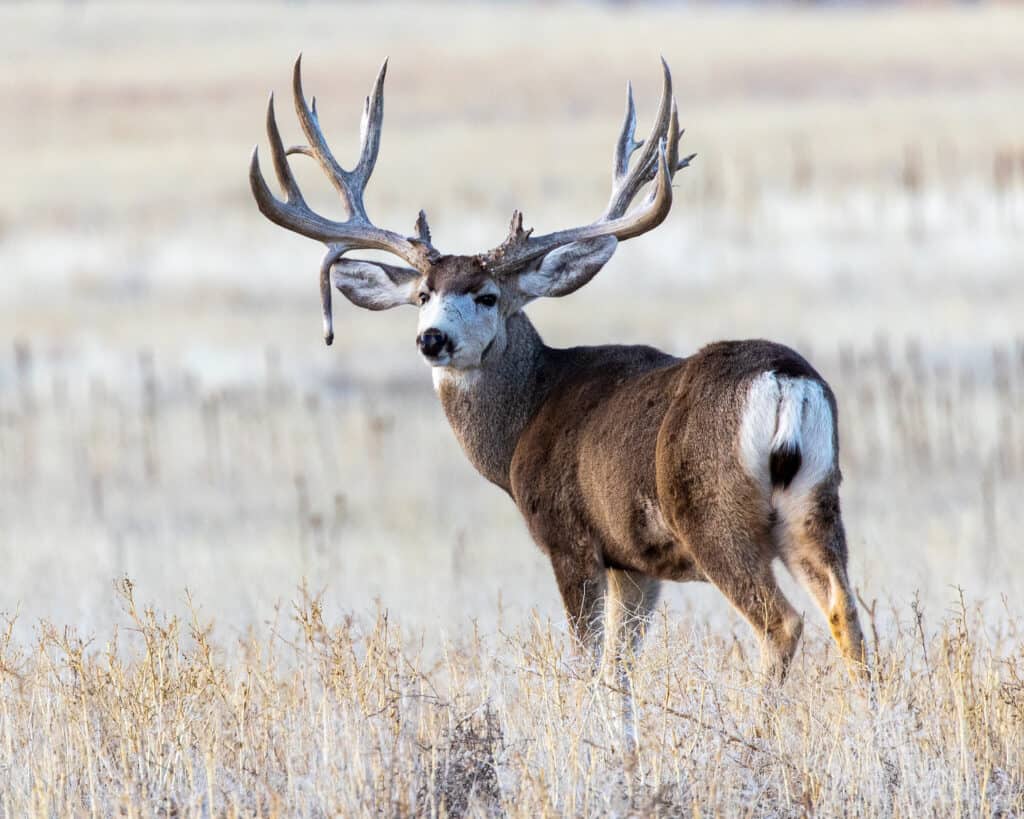
Mule deer abound on Gene Howe WMA.
©iStock.com/Jeff Edwards
Located along the Canadian River in Hemphill County, the Gene Howe WMA contains 5,394 acres of public land for Texas hunting. Gene Howe, located in North Texas, features rolling plains and over 80 years of providing land for public use.
Approximately one-third of cottonwood and tallgrass bottomland and two-thirds sand sage and midgrass, Gene Howe has many plant species. Common plants include cottonwood and tallgrass, netleaf hackberry, black locust, indian grass, and alkali sacaton.
Gene Howe provides an abundance of wildlife, including bobwhite and scaled quail, Rio Grande turkey, and prairie chicken. White-tailed deer and mule deer are also plentiful in this WMA. As in most of North Texas, coyotes, bobcats, black-tailed jackrabbits, raccoons, eastern cotton tails, and black-tailed prairie dogs roam freely.
Be on the lookout for feral hogs, which are known to attack without provocation. If you are fortunate, you might also see a burrowing owl, whose population is dwindling. Mississippi kite, Texas horned lizard, mourning dove, prairie rattlesnake, and western Massasauga rattlesnake also abound in Gene Howe. The WMA also provides a wintering and breeding area for ducks, geese, and other wetland birds.
3. Resaca de la Palma State Park
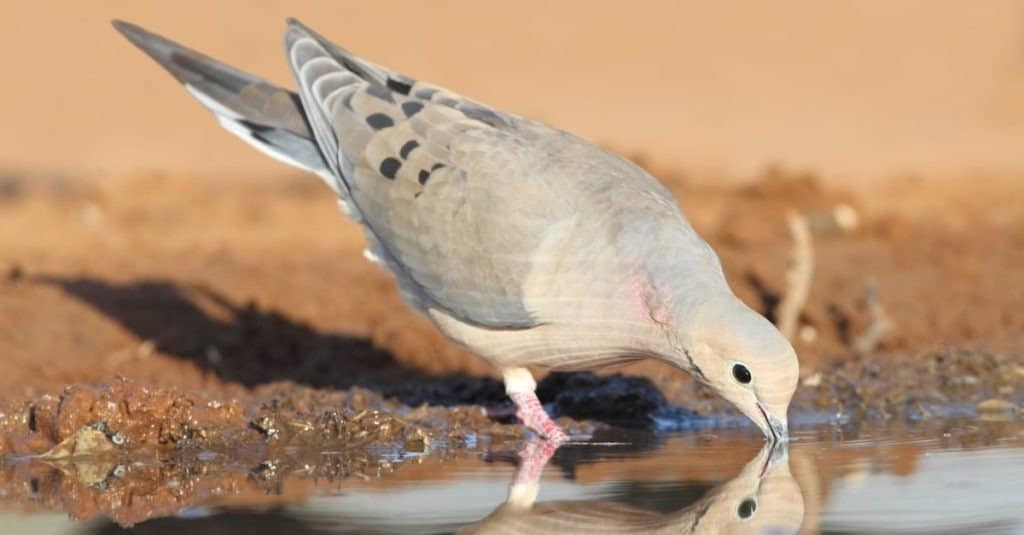
Mourning doves are ubiquitous in Resaca de la Palma State Park.
©iStock.com/BrianLasenby
In the southern tip of the state in Cameron County, Resaca de la Palma State Park offers 1,200 acres of public land. Dove hunting is the main offering for hunting in this prime area. Resaca de la Palma has 60 acres of wetland as well as 420 acres of mature woodland with mainly ebony trees. As well, the state park has 720 acres of woodland and savannah habitats dominated by mesquite.
4. Las Palomas WMA
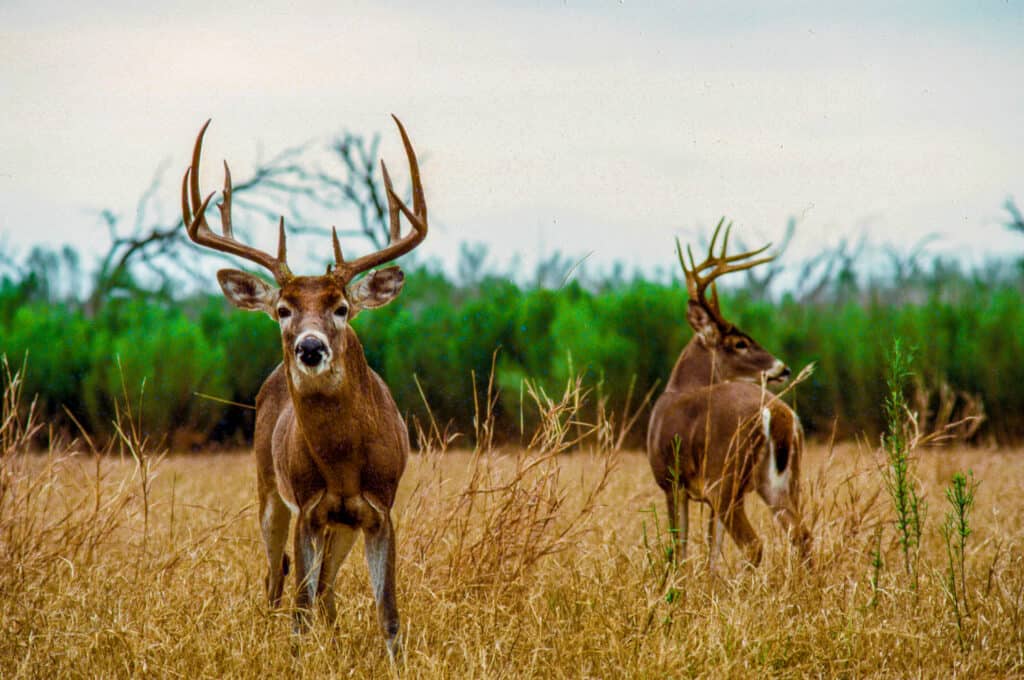
Southern Texas deer grow giant antlers.
©iStock.com/Dan Richards
Located in Cameron, Hidalgo, and Presidio counties of the Lower Rio Grande Valley, Las Palomas Wildlife Management Area (LPWMA) contains 3,311 acres of land broken into 18 units ranging from two to 604 acres.
LPWMA offers two methods for public hunting. From September to February, public hunting permit holders can hunt chachalaca, quail, rabbit, white-winged dove, mourning dove, and white-tipped dove. In fact, Las Palomas is the only WMA in Texas that allows chachalaca hunts. Chachalacas are an interesting species. They are a long-tailed, tropical chicken that lives amongst the treetops. Though they are subtle in appearance, they are known for their loud, squawking morning choruses.
Las Palomas also offers deer hunting with seven white-tailed hunts available.
5. Lower Rio Grande Valley NWR
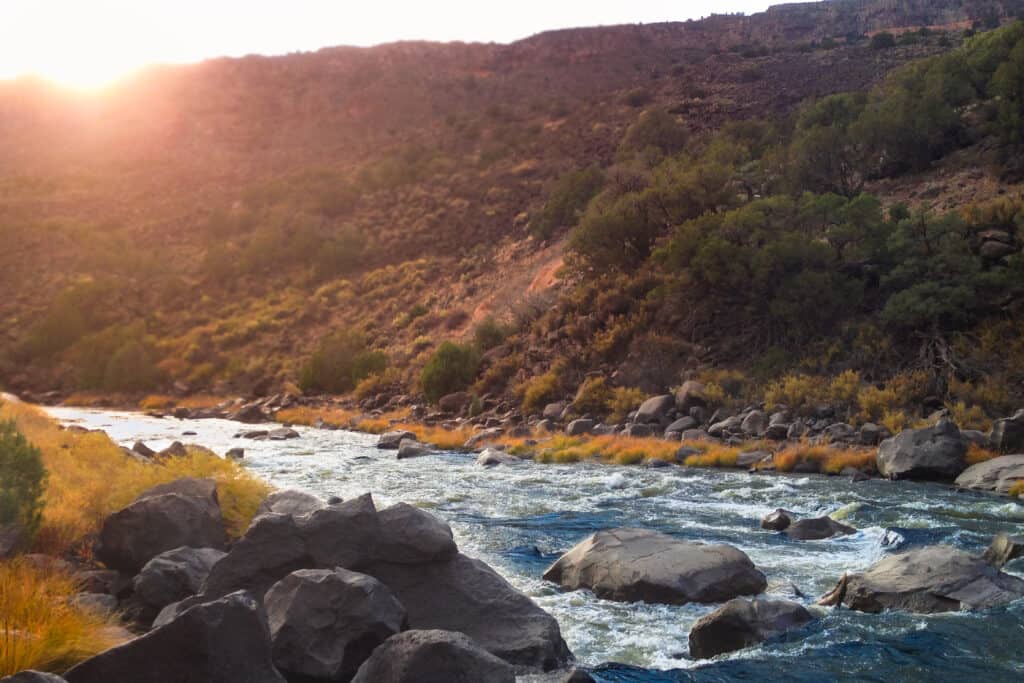
Lower Rio Grande Valley NWR features wildlife not usually associated with the U.S.
©designwithval/Shutterstock.com
Located in Cameron, Hidalgo, Starr, and Zapata counties, Lower Rio Grande Valley National Wildlife Refuge features 90,788 acres of public land in a premium Texas hunting region. This wildlife refuge hosts some rare species like ocelot and jaguarundi (though they are difficult to spot). Feral hog and nilgai are also abundant in Lower Rio Grande NWR. Lower Rio Grande offers feral hog and nilgai hunting in archery, firearms, and youth. Permits are issued by lottery, and the NWR offers a two-deer (one buck) limit with an unlimited quota on exotics.
The Lower Rio Grande Valley NWR is a great choice for those wanting a great public Texas land. Whitetail archery hunts produce around a 30 percent success rate. As well, this NWR has public roads all throughout the area, so hunters have a lot more freedom than they do in other public lands. Depending on the particular hunt, public hunting dates run from early November through mid-January.
6. Black Gap WMA
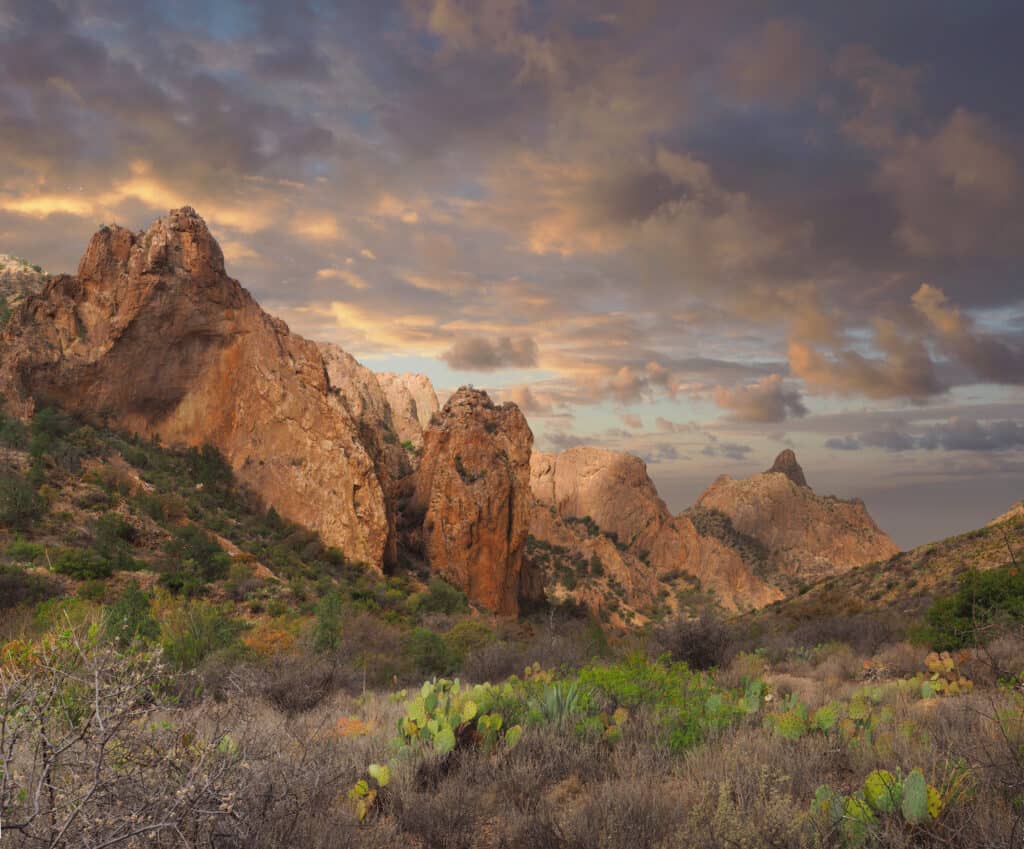
Black Gap WMA is anchored by Big Bend National Park.
©iStock.com/sdbower
Most hunters long for a chance at hunting in West Texas. Located where the Sierranias del Burro and Sierra del Carmen Mountain Ranges enter into Texas, Black Gap WMA offers roughly 103,000 acres of public land. Hunting is open year-round in this Brewster County jewel, except for special permit hunts. The WMA is home to over 300 bird species and 30 types of mammals. Here at Black Gap, it’s not uncommon to see black bears and desert bighorn sheep.
Each fall and winter, Black Gap offers public hunting for mule deer, white-tailed deer, javelina, dove, and quail. With Black Gap’s breathtaking scenery and diverse animal population, even hunters who walk away empty-handed clamor to return to this hunting haven.
7. Elephant Mountain WMA
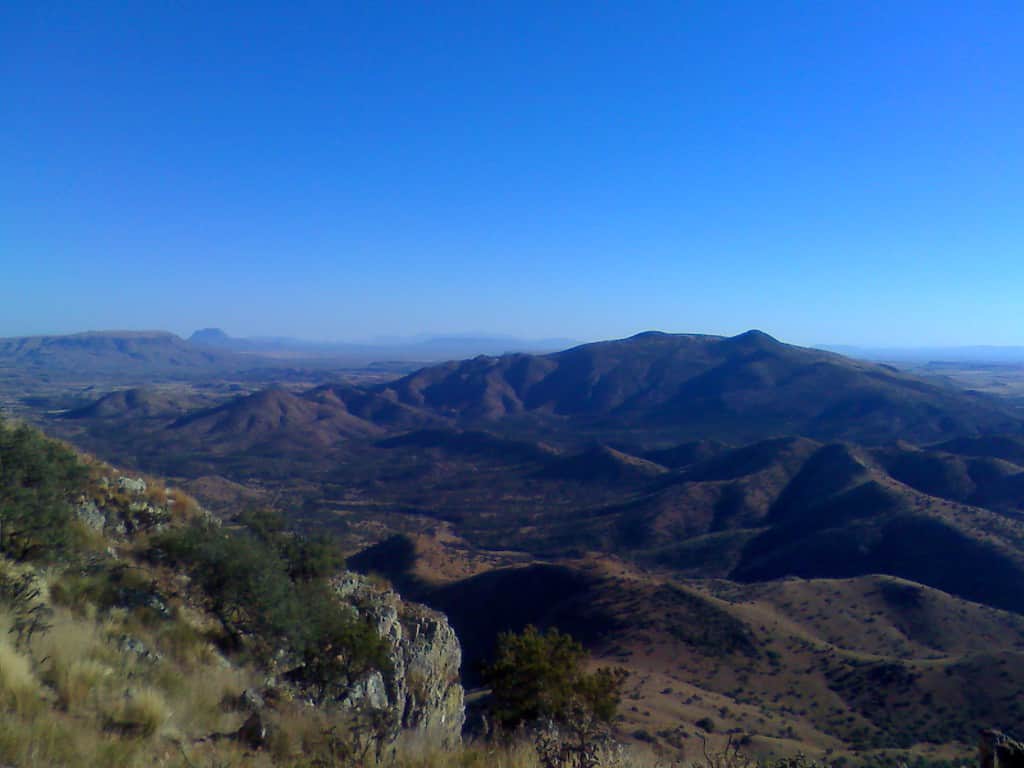
In Brewster County,
Elephant
Mountain was acquired in 1985 via a private donation.
©Rebelcry, CC BY-SA 3.0, via Wikimedia Commons – License
I spent a good deal of my summertime childhood in West Texas, and those memories always conjure the dry, hot air and the spectacular sunsets of this region. Located within the Trans-Pecos Ecological Region of West Texas, Elephant Mountain Wildlife Management offers 23,147 acres of public hunting land.
In Brewster County, Elephant Mountain was acquired in 1985 via a private donation. The original purpose of instituting Elephant Mountain was for land conservation and the development of desert bighorn and large game animals. The WMA provides other uses as well such as wildlife research and recreational use.
Desert bighorns are abundant in Elephant Mountain. Additional wildlife includes desert mule deer, pronghorn antelope, coyotes, scaled quail, rattlesnakes, whiptail lizards, and spadefoot toads.
The WMA’s namesake — Elephant Mountain — refers to the most prominent feature in the area. Rising 6,225 above sea level, Elephant Mountain runs from the northern to the southern property boundaries.
Desert Bighorn is the primary public hunting focus on Elephant Mountain. Those wanting in on this great hunt should apply each May through the Texas Grand Slam program. Elephant Mountain also offers public hunting for small game such as mourning and white-winged doves, rabbits, hares, and scaled quail.
8. Roger R. Fawcett WMA
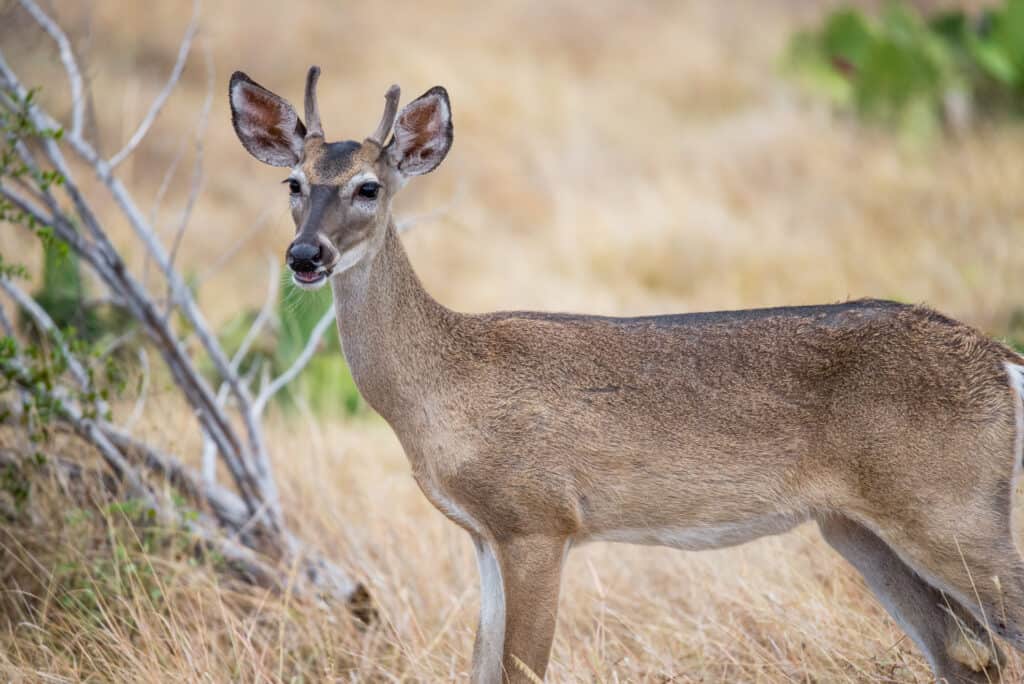
Roger Fawcett offers both white-tailed and small hunting on its WMA.
©iStock.com/GizmoPhoto
Located in southern Palo Pinto County northeast of Gordon, Texas, Roger R. Fawcett Wildlife Management offers 5,459 acres for public hunting. The area features old-growth Cross Timbers with some trees here that are 200-300 years old. The woodlands are separated by areas of open grassland and rocky sandstone. This WMA has an elevation of 350 feet and features prominent populations of white-tailed deer and waterfowl.
Roger Fawcett offers both white-tailed and small hunting on its WMA.
As any ethical hunter knows, no matter whether you’re hunting deer in Texas or dove in Tennessee, make sure to check out all of the details and regulations before you begin planning your next hunting trip. As well, plan early. Most public hunting land is coveted, and those spaces will be gone in a hurry!
The photo featured at the top of this post is © Jordan Pitre/Shutterstock.com
Thank you for reading! Have some feedback for us? Contact the AZ Animals editorial team.






